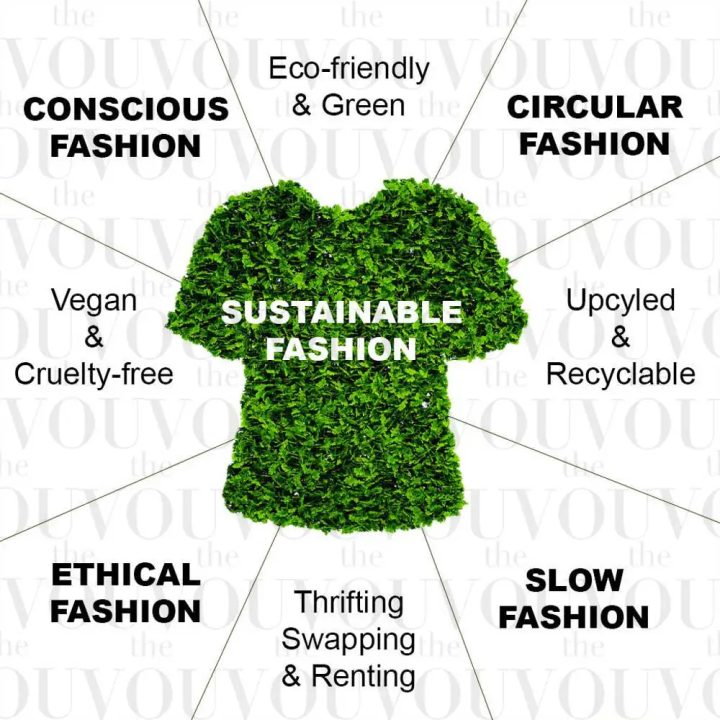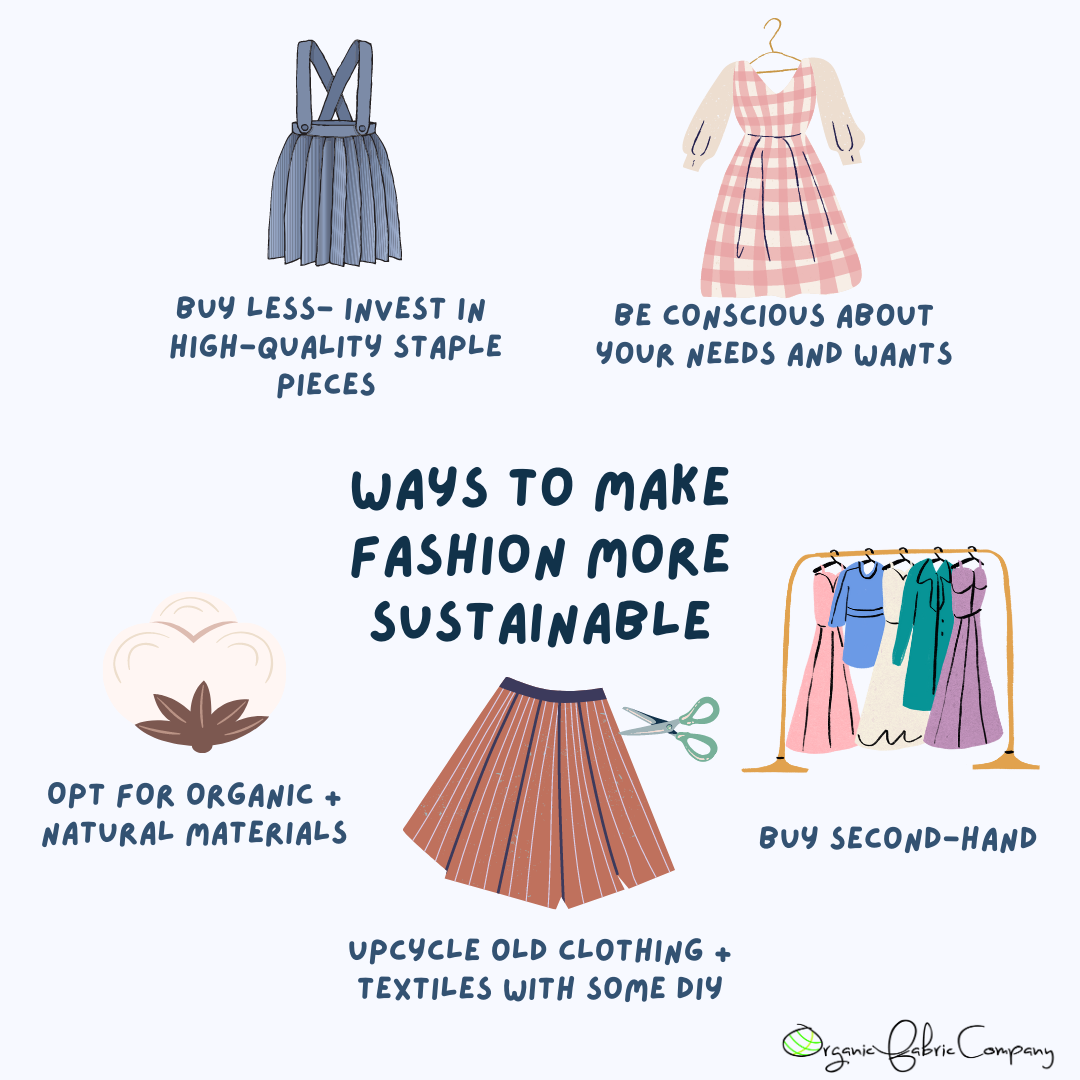Remain Ahead of the Curve by Checking Out Cutting-edge Style Fads
In a sector as dynamic as fashion, remaining ahead involves greater than just complying with current trends-- it demands an exploration of advancement. Smart fabrics, as an example, are transforming garments right into functional work of arts, while 3D printing is transforming design procedures with its customizable, waste-reducing capabilities. As sustainability becomes a keystone, innovations like eco-friendly materials and circular fashion practices are improving ecological duty - Cape Town Sustainable Fashion. Furthermore, the convergence of technology and fashion declares a new age of consumer involvement. Exactly how, then, can these arising trends redefine the future of fashion, and what effects do they hold for brands looking for to flourish in this advancing landscape?

Welcoming Smart Textiles
Recently, the apparel industry has actually observed a transformative shift with the combination of smart textiles, an innovative technology that blends innovation with fabric. This development represents not only a fusion of visual appeals and capability yet likewise a considerable jump towards sustainability and customization in fashion. Smart textiles, also called e-textiles, installed advanced electronic devices such as sensors and conductive threads within the material, making it possible for garments to communicate with the user or the atmosphere.
These fabrics are created to monitor physiological criteria, such as heart rate or body temperature level, giving real-time health analytics. Beyond wellness applications, clever fabrics are likewise being utilized for flexible clothes, which can alter shade or pattern in reaction to environmental stimuli, thus using a dynamic fashion experience.
Furthermore, the growth of energy-harvesting fabrics that create power from activity or sunlight is paving the method for self-sufficient wearable technology. This technology is interesting ecologically aware customers and designers aiming to lower the environmental footprint of style. As r & d in this field breakthrough, wise fabrics are expected to become progressively widespread, improving the landscape of modern fashion with their multifunctional abilities.
The Rise of 3D Printing
Revolutionizing the manufacturing landscape, 3D printing has become a game-changer in the fashion business. This sophisticated modern technology has made it possible for developers to push the limits of creative thinking, creating detailed and personalized garments that were formerly unthinkable. By leveraging digital design and additive manufacturing, 3D printing facilitates the development of complex geometries and patterns, permitting designers to explore brand-new appearances and structures.
A significant advantage of 3D printing in fashion is its ability to create on-demand, minimizing waste and minimizing supply needs. This performance not only maximizes manufacturing procedures yet also permits quick prototyping, making it possible for developers to bring their visions to life in a much shorter duration. Moreover, 3D printing sustains personalization somewhat unrivaled by traditional techniques, supplying special styles and customized fits customized to specific customer preferences.
The surge of 3D printing has actually likewise democratized fashion, making it easily accessible to arising designers that can currently make top notch items without significant financial investment in conventional production framework. As modern technology proceeds to development, the fashion business is poised to harness the complete potential of 3D printing, exploring brand-new materials and strategies that will definitely redefine just how style is developed and generated.
Lasting Style Advancements
As the garment industry grapples with the pressing demand for ecological duty, lasting fashion developments have actually emerged at the leading edge of transformative modification. The expanding awareness of ecological influence has actually fueled a shift towards more eco-conscious practices and products. Brands and designers are currently focusing on sustainability, including approaches that lessen waste and minimize carbon footprints.
One considerable development is the increase of circular style, which stresses recycling and upcycling to prolong the lifecycle of garments. This strategy not just decreases waste yet likewise motivates customers to take on an extra conscious technique to clothes intake. Furthermore, using sustainable materials, such as organic cotton, hemp, and recycled polyester, has weblink actually acquired traction. These materials call for much less water and energy throughout production, significantly minimizing ecological effect.
An additional development exists in the adoption of innovative dyeing strategies that make use of all-natural dyes or waterless procedures, thereby lowering the large quantities of water and chemicals traditionally made use of in textile dyeing. Furthermore, innovations in biotechnology have resulted in the production of lab-grown leather and textiles, offering cruelty-free and eco-friendly alternatives to traditional materials. Via these pioneering efforts, the garment industry is making significant strides towards an extra sustainable future.

Tech-Integrated Clothing
Tech-integrated clothing represents a groundbreaking blend of style and innovation, improving exactly how people engage with their apparel. This cutting-edge domain is noted by the addition of wise textiles and ingrained digital elements, enhancing both functionality and aesthetic charm. From fitness trackers embedded in sportswear to warmed jackets controlled through smartphone applications, tech-integrated apparel supplies customers unprecedented comfort and versatility.
Introducing brand names are driving this trend, concentrating on creating garments that respond to ecological stimuli or customer commands. For example, some garments can alter color or pattern in reaction to temperature changes, while others integrate biometric sensing units to visit this site right here keep track of health and wellness metrics like heart price or stress levels. The smooth integration of modern technology into textiles likewise expands to environmental sustainability, with initiatives to develop self-cleaning materials or garments that adapt to weather, hence reducing the need for several layers.
Furthermore, the introduction of wearable innovation is not just restricted to clothing yet reaches devices like watches and eyeglasses, further broadening the scope of tech-integrated fashion. As the sector proceeds to innovate, the potential for modification and personalization in garments expands, supplying consumers distinct, tech-enhanced fashion experiences that provide to their specific demands and preferences.
Future of Virtual Style
In recent years, the future of online style has actually become a transformative force within the sector, leveraging improvements in electronic modern technology to redefine exactly how fashion is produced, experienced, and eaten. By incorporating augmented reality (AR), online fact (VR), and 3D layout tools, designers can now craft interactive and immersive experiences that transcend standard fashion boundaries. Online style enables the development of garments that exist solely in digital settings, providing unlimited opportunities for innovation without the constraints of physical production.
This electronic change not only presents chances for creative expression however additionally addresses sustainability issues integral in typical fashion practices. check my source Cape Town Sustainable Fashion. By eliminating the requirement for physical resources, online style decreases waste and reduces carbon footprints. Additionally, the increase of virtual style lines up with the increasing consumer need for special and tailored experiences, as digital garments can be tailored and tailored to private choices effortlessly

Conclusion
The style sector's future depend on the combination of lasting practices and ingenious modern technologies - Cape Town Sustainable Fashion. Smart textiles and tech-integrated apparel are improving functionality, while 3D printing offers chances for personalization and waste reduction. Lasting style, with circular methods and green products, shows a commitment to environmental stewardship. Furthermore, virtual fashion is positioned to redefine consumer interactions. Adjusting to these patterns is important for brands looking for to remain competitive and appropriate in this rapidly evolving landscape.
In current years, the fashion market has witnessed a transformative change with the combination of clever textiles, a sophisticated technology that mixes technology with material.As the fashion industry grapples with the pressing demand for ecological obligation, lasting fashion innovations have actually emerged at the leading edge of transformative adjustment.In current years, the future of online fashion has actually emerged as a transformative force within the sector, leveraging advancements in digital technology to redefine just how style is produced, experienced, and taken in. The increase of online style aligns with the enhancing customer demand for one-of-a-kind and tailored experiences, as online garments can be tailored and customized to individual preferences with convenience.
The style market's future lies in the combination of cutting-edge technologies and sustainable techniques.